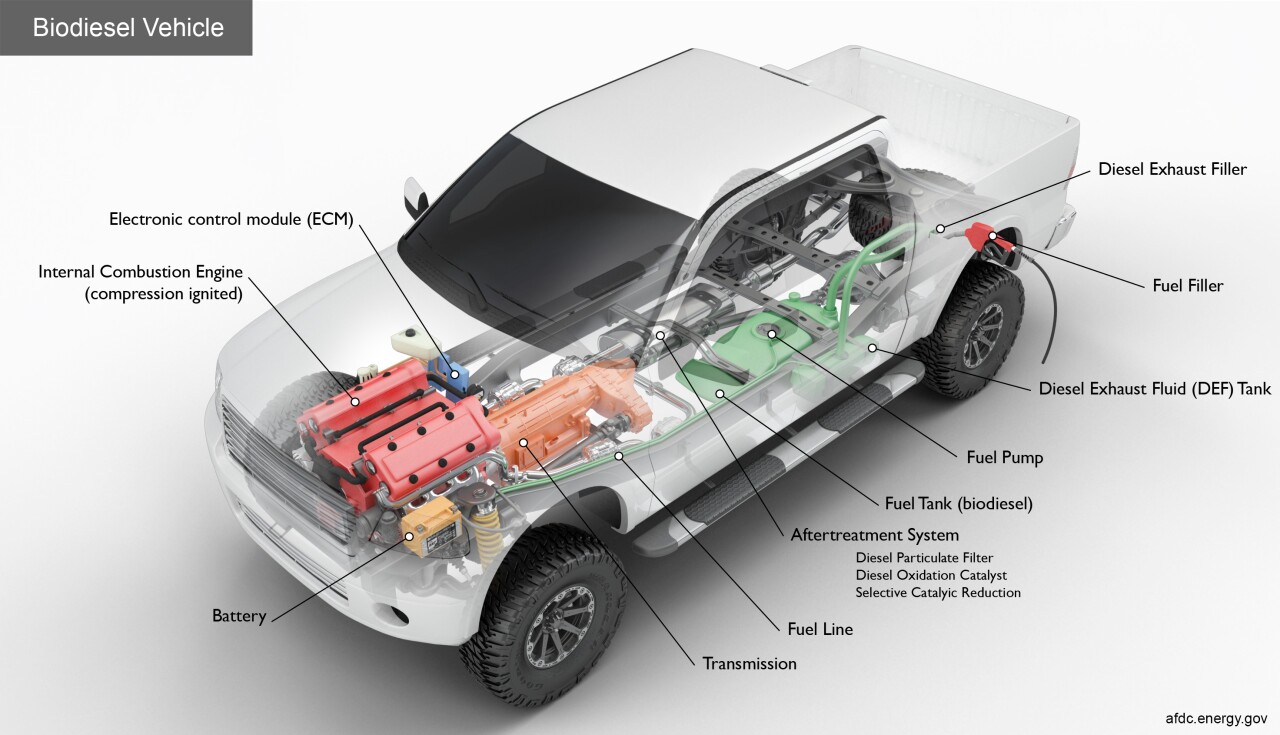(KERO) — So you may be wondering exactly what biodiesel fuel is? Why is there a current push for it and how does it benefit the environment?
According to the U.S. Department of Energy's Alternative Fuels Data Center, biodiesel is a renewable, biodegradable fuel manufactured domestically from vegetable oils, animal fats, or recycled restaurant grease.
Biodiesel acts as a substitute for petroleum diesel. The Alternative Fuels Data Center says using biodiesel as a vehicle fuel improves air quality and provides safety benefits.
The National Biodiesel Board describes it as: "Made from an increasingly diverse mix of resources such as recycled cooking oil, soybean oil and animal fats, biodiesel is a renewable, clean-burning diesel replacement that can be used in existing diesel engines without modification. It is the nation’s first domestically produced, commercially available advanced biofuel."
The technical definition of biodiesel is as follows:
- Biodiesel, n - a fuel comprised of mono-alkyl esters of long-chain fatty acids derived from vegetable oils or animal fats, designated B100, and meeting the requirements of ASTM D 6751.
- Biodiesel Blend, n - a blend of biodiesel fuel meeting ASTM D 6751 with petroleum-based diesel fuel, designated BXX, where XX represents the volume percentage of biodiesel fuel in the blend.

The Alternative Fuels Data Center says using biodiesel reduces carbon emissions because the carbon dioxide released from biodiesel is absorbed from soybeans or other feedstocks used to make the fuel.
Using biodiesel reduces life cycle emissions because carbon dioxide released from biodiesel combustion is offset by the carbon dioxide absorbed from growing soybeans or other feedstocks used to produce the fuel. Life cycle analysis completed by Argonne National Laboratory found that B100 use reduces carbon dioxide emissions by 74% compared with petroleum diesel. The California Air Resources Board (CARB) reported similar values(PDF) from various sources for its life cycle analysis of biodiesel.
The National Biodiesel Board also points out that biodiesel:
- Reduces lifecycle greenhouse gases by 86 percent
- Lowers particulate matter by 47 percent, reduces smog, and makes our air healthier to breathe
- Reduces hydrocarbon emissions by 67 percent
The Alternative Fuels Data Center also says biodiesel causes far less damage than petroleum diesel if spilled or released into the environment. It's safer than petroleum diesel because it is less combustible.
It is safer than petroleum diesel because it is less combustible. The flashpoint for biodiesel is higher than 130°C, compared with about 52°C for petroleum diesel. Biodiesel is safe to handle, store, and transport.
Health Benefits of Using Biodiesel
In addition, a study also stated that the use of biodiesel has health benefits as well. The study by the Clean Fuels Alliance America showed that: "These health benefits from the switch to better, cleaner biodiesel include decreased cancer risk, fewer premature deaths, and reduced asthma attacks. Saving lives by reducing the health impacts of transportation and home heating fuels is a priority, and biodiesel is widely available today to achieve that goal."
"We have always known that biodiesel offers a better and cleaner alternative to petroleum diesel," Clean Fuels Alliance America CEO Donnell Rehagen said. "This study quantifies the health benefits and shows that by using renewable fuels like biodiesel and renewable diesel, we are bringing positive change to people's lives, the nation's health and the economy."
According to the study, switching to biodiesel in home heating and transportation would prevent 340 premature deaths annually and result in 46,000 fewer sick days.
It would also reduce cancer risks by 45% if it was used in heavy-duty trucks.
The use of biodiesel would also reduce the number of asthma attacks and overall lung problems.
Disadvantages of Using Biodiesel
That isn't to say that biodiesel is a perfect fuel source. Like other sources, it does have its limitations.
One disadvantage is cold. According to the website Farm Energy, which was created by University Extensions specialists around the United States: "In cold climates, it can be a challenge to fuel vehicles with high blends of biodiesel because biodiesel tends to gel (freeze) at higher temperatures than does conventional diesel. The actual temperature at which biodiesel freezes depends on the type of oil or fat from which it is made."
Another issue is water use. The website How Stuff Works says "The water demands of some biofuel-producing crops could put unsustainable pressure on local water resources if not managed wisely."
It also points out that the production of biofuels could affect food production and access to affordable food.
"The simple supply-and-demand economics of biofuels -- increase demand for corn, for example, and corn becomes more expensive -- can pose a threat to some regions' food security, or the access to affordable nutritious food for the region's population."
And as more companies look to produce biofuels, that could lead to deforestation as the demand for land to grow crops would increase.
Increased demand for fertilizer would cause that cost to increase for those farmers producing food crops, which could lead to an increase in the cost of food.
Other negative factors include the cost to produce biofuels, variations in biofuel qualities, and the technical challenges of running vehicles on biofuels.
How Does Biodiesel Benefit California?
According to the National Biodiesel Board in 2020 bio-diesel reduced carbon emissions by 6.8-million metric tons.
More specifically, biodiesel's impact that year was equivalent to removing more than 1.5-million vehicles off of state roads.
In addition, the biodiesel industry brought 4,400 full-time jobs and $138-million in wages to Californians in 2020.
Lastly, California is aiming to reduce transportation emissions by 20-percent by the year 2030.
How Do Diesel Vehicles Work Using Biodiesel?






